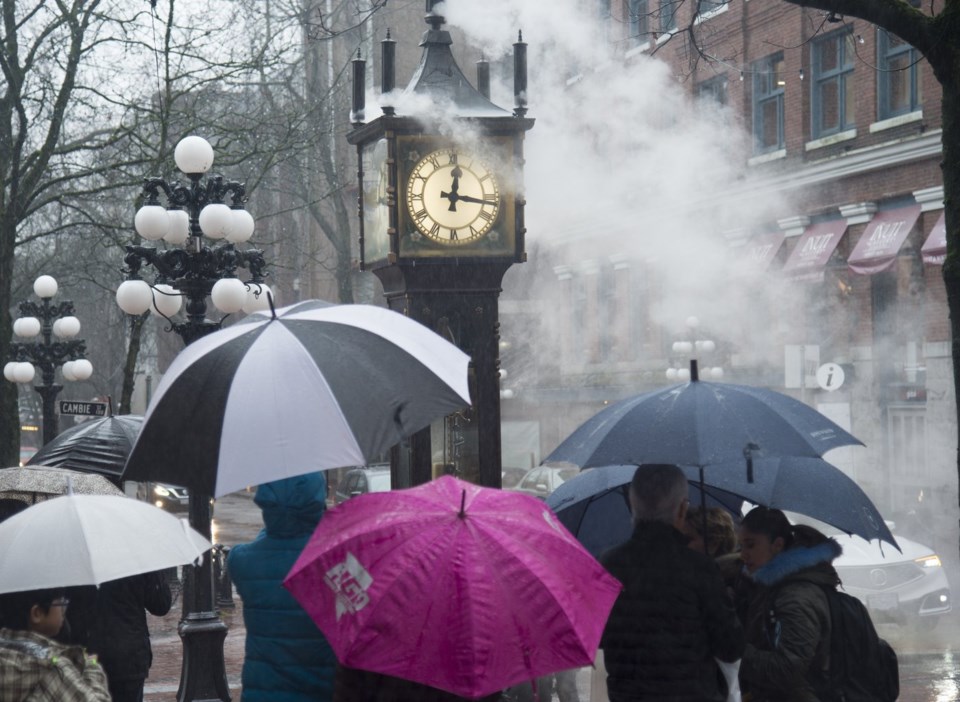TORONTO — Time change discourse happens on a predictable cycle. Every year, twice a year, a chorus of Canadians decries the policy of springing forward and falling back.
It really is like clockwork.
Their calls to abolish daylight time have largely been fruitless, but experts say the semi-annual hubbub provides an opportunity to reflect on an even more important cycle: the circadian rhythm.
Most Canadians are set to turn their clocks back an hour on the morning of Nov. 3. Then, they will set them forward again on March 9, knocking their circadian rhythm out of whack.
Patricia Lakin-Thomas, a professor at York University and board member for the Canadian Society for Chronobiology, has long been interested in biological cycles.
"When I go to a chronobiology conference, I'm hearing talks about everything from human societies to bacteria in a dish," she said. "We're interested in the general question of: how do living things tell time?"
The answer is the circadian rhythm, or what Lakin-Thomas describes as the "brain clock."
"We have rhythms in our guts and our liver and lungs and muscles, and the 'brain clock' sends information to keep all of those in synchrony," Lakin-Thomas said. "The 'brain clock' has to get reset every day because it's not very accurate, and it needs sunlight to do that."
She calls the daily cycle of light and dark the "sun clock."
Those two clocks are only tangentially related to the "social clock" — the one hanging on your wall or displayed on your cellphone.
If Lakin-Thomas could rearrange society, she said she'd align the social clock with the sun clock.
"The fantasy, of course, is to go back to the way people did it before we had clocks. Go back to what farmers do and get up with the sun, that would be the ideal," she said.
"But that would mean that your neighbours slightly to the west of you are getting up a few minutes later than you are, and your neighbours slightly to the east are getting up a few minutes earlier than you are, and in our industrialized society, we wouldn't be able to make that work."
Given the strictures of our post-industrial world, it's worth understanding what we can do to help our brain clock align with the social clock, said Ralph Mistlberger, a psychology professor at Simon Fraser University who researches sleep.
"We're interested in specific brain mechanisms, but we're also interested in how the circadian system is organized, what kinds of components there are, how it's controlled by external stimuli," he said of his research lab.
Mistlberger has been studying sleep for more than four decades, and in that time has also been contracted by various sports teams to offer insight on how to mitigate the effects of jet lag.
He suggests using light as a tool to help adjust their circadian rhythm.
There are certain photoreceptors in the retina — called melanopsinergic, intrinsically photoreceptive retinal ganglion cells — that are crucial for resetting the circadian rhythm.
These aren't the rods and cones that give us our vision, they're cells whose job is to detect the presence of light. Because of that, some blind people's circadian rhythm is still affected by light, though others lack the photoreceptors.
For those who do have those photoreceptors, sighted or otherwise, the light has to be pretty intense, Mistlberger said, demonstrating with a studio light typically used in photoshoots and filming. It should be very bright and blue-toned, and you have to be pretty close to it.
"If I'm six inches away, if I hold this thing right up to my face, I can get a pretty good blast," he said. "That would be sufficient...These things do work."
You also have to use them at certain times of day, he said.
Light exposure only affects the circadian rhythm when the brain perceives it to be the morning and night, Mistlberger said, so getting sun in the afternoon won't help wake you up.
That's why many scientists are so opposed to clocks springing forward, he noted. It makes the sunrise happen later in the day — creating further distance between the "sun clock" and the "social clock" — which confuses the "brain clock," because people don't get the early-morning dose of sunlight they need to reset their circadian rhythm.
"It's going to be harder to maintain an 'early to bed, early to wake,' schedule," Mistlberger said.
Though many scientists and doctors suggest we should stick with standard time — winter time — policymakers are mostly moving in the opposite direction.
In 2020, Yukon opted to observe daylight time year-round. That means that in the capital of Whitehorse, come winter solstice Dec. 21, the sun doesn't rise until 11 a.m.
That same year, Ontario passed legislation to permanently remain on daylight time, but the bill was contingent on Quebec and New York state also making the move.
The case for daylight time is mostly related to business: if the sun is out later in the evening, people will stay out later and spend money.
This year, Quebec politicians joined the discourse. Late last month, Justice Minister Simon Jolin-Barrette launched a public consultation on the time change, and said the government may table legislation to abolish the tradition.
In addition to the Yukon, Saskatchewan doesn't change its clocks, and neither does a small region of eastern Quebec, which remains on Atlantic standard time year-round.
'This report by The Canadian Press was first published Nov. 2, 2024.
Nicole Thompson, The Canadian Press




